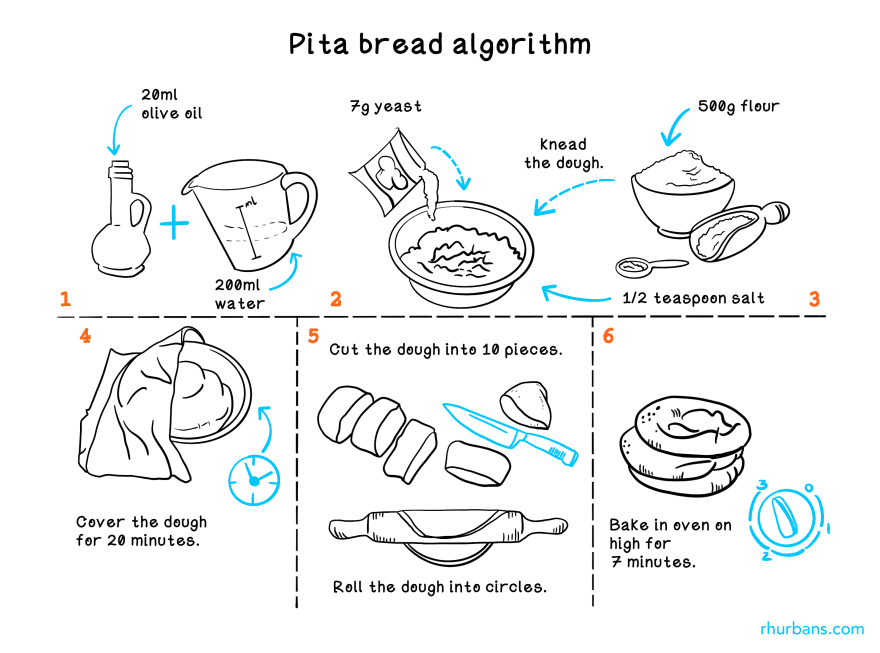Algorithms are like a pita bread recipe. There's a problem being solved (making good pita bread), ingredients required (pieces of input), a sequence of steps to follow (recipe instructions), and the resulting output, in this case, pita bread of a certain quality.
Algorithms can provide the same output given a specific input, always - these are called deterministic algorithms; or they can result in a different output when the steps involve an element of randomness or uncertainty - these are called stochastic algorithms.
The algorithm for a .max(x, y) function might involve comparing two numbers to find the maximum. Inputs are x and y, and the algorithm finds the largest - somewhat easy to intuit how it works.
The algorithm for Photoshop to cut a background might involve iterating through all the pixels in an image and finding edges or areas of contrast - there's a set of well known techniques for this.
The algorithm for Netflix might involve comparing the category of videos you've watched with the categories of all other movies out there to provide you with recommendations...
...or, it might compare your demographic data with other user's data, and provide you with recommendations based on movies they have watched - these algorithms' outputs are more difficult to estimate.
You might have heard of the joke: An algorithm is a word used by programmers when they don't want to explain what they did...
Deep learning models are solving some of the toughest problems today, but they're often mysterious in their workings. The future calls for algorithms to be more transparent, understandable, and accessible to people of varied skillsets - a mammoth of a challenge for us all!
If you enjoyed this thread, check out my book: Grokking Artificial Intelligence Algorithms with Manning, consider following me for more, or join my mailing list for infrequent knowledge drops in your inbox: rhurbans.com/subscribe.




Top comments (1)
Hi,
Wrapping a pita effectively involves a few simple steps to ensure that your fillings stay inside and the pita remains easy to eat.
Here are some effective ways to wrap a pita:
Basic Fold
Warm the Pita: Lightly warm the pita bread to make it more pliable.
Prepare Fillings: Lay out your fillings such as hummus, vegetables, meats, or sauces.
Spread Fillings: Place the fillings in the center of the pita, leaving some space around the edges.
Fold the Bottom: Fold the bottom edge of the pita up about one-third of the way.
Fold the Sides: Bring the left and right sides of the pita towards the center, overlapping them over the fillings.
Secure the Wrap: Hold the wrap firmly with your hand or use a piece of parchment paper or foil to keep it together.
Burrito Style
Pocket Style
Triangle Fold
Tips for Wrapping Pita
By following these steps, you can create a neatly wrapped pita that holds together well and is enjoyable to eat.